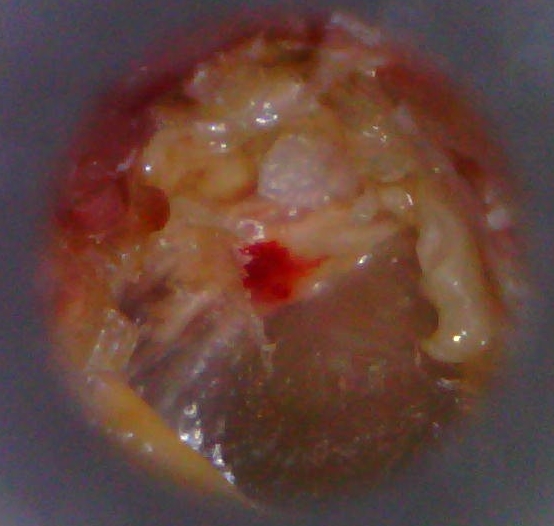 As cholesteatoma is a nest of epidermal cells that develops mainly level of middle ear ’. The cholesteatoma is not a tumor but has many features in common to neoplastic diseases, It can also increase greatly eroding and destroying adjacent bone structures.
As cholesteatoma is a nest of epidermal cells that develops mainly level of middle ear ’. The cholesteatoma is not a tumor but has many features in common to neoplastic diseases, It can also increase greatly eroding and destroying adjacent bone structures.
Most colesteatomi are acquired, associated with tympanic membrane perforations or major retractions in the same.
The cholesteatoma gives rise to a chronic infectious/inflammatory situation: l ’-cholesteatoma otitis media. Tympanic perforation and cholesteatoma favor the development of bacterial colonies that can give dell ’ middle ear infections manifesting with otorrhea (discharge of pus from the ear ’) and mild pain/modesto .
As we have already mentioned the cholesteatoma can erode adjacent structures and you can have a dell ’ with worsening hearing loss, destruction of auditory ossicles.
In its growth the cholesteatoma can give other serious complications: facial paralysis for dehiscence or erosion of the fallopian tube in which lies, involvement of the cochlea causing sensorineural hearing loss, erosion of lateral semicircular canal leading to dizziness to labyrinthine fistula, mastoiditis, bacterial meningitis, cerebral and cerebellar abscess, sigmoid sinus thrombophlebitis.
And’ so recognizing a cholesteatoma but unfortunately diagnosis is not always easy. In some cases a ’ accurate otoscopy can allow you to view a cholesteatoma through the tympanic membrane, often, however, the presence of pus, inflamed duct skin or crusting/Earwax cannot view the mass Insufflation. An audiometric test showing a ’ conductive hearing loss should prompt clinicians to relevant additional investigations to exclude the cholesteatoma.
CT and MRI can identify the disease or directly or indirectly by assessing bone erosions.
Medical therapy is given to infectious exacerbations management while the cholesteatoma care exclusively through surgery of tympanoplasty.
Unfortunately the relapse rate after surgery is steep even in expert hands and it is therefore important that an accurate follow-up for many years after ’ surgery









